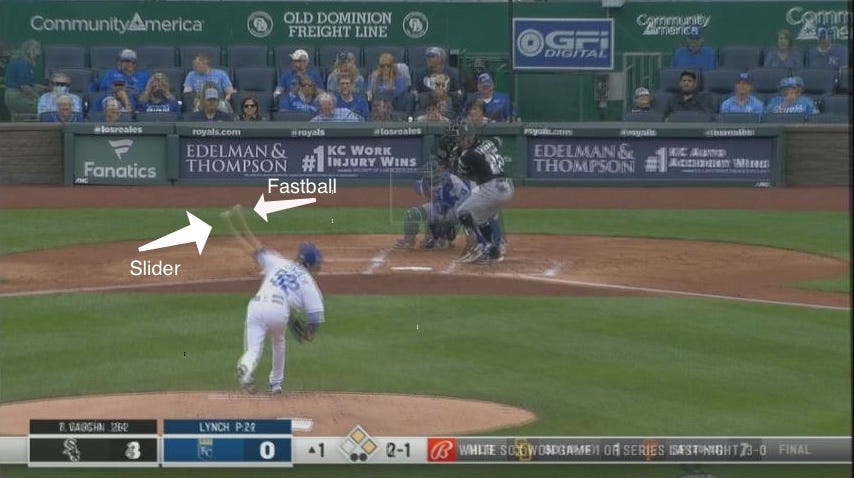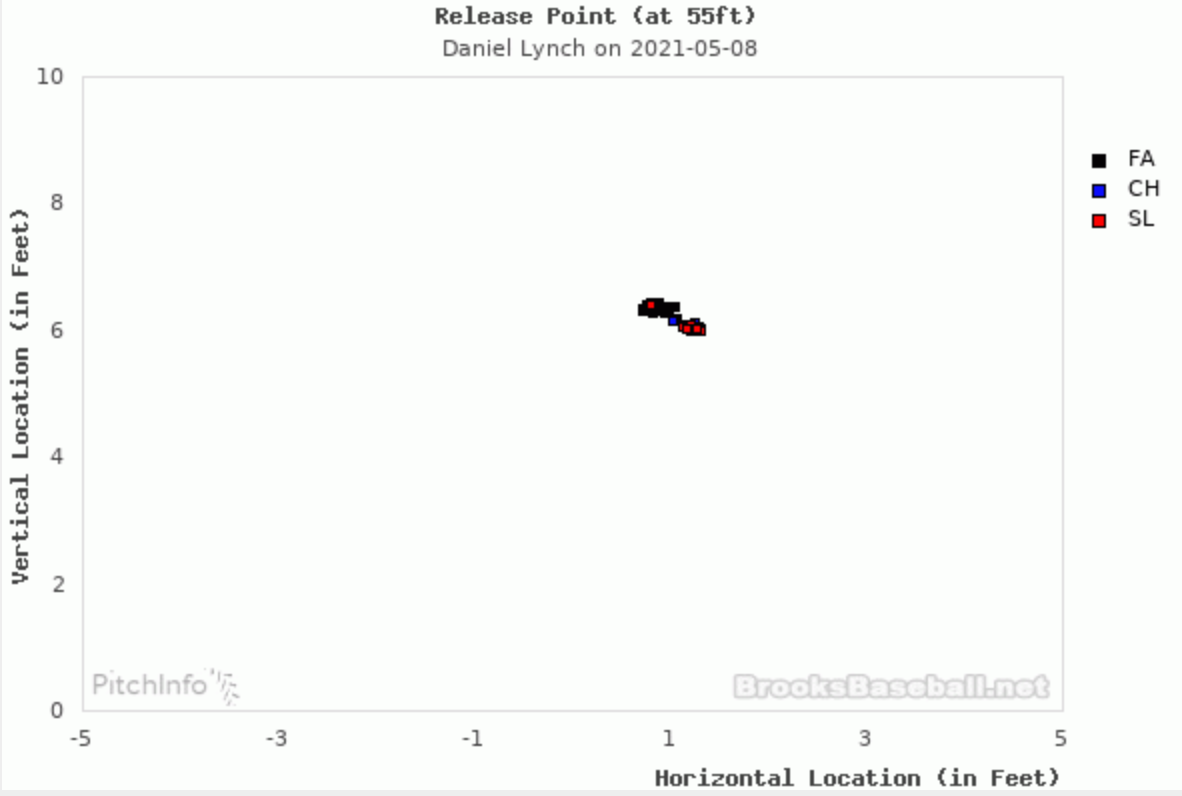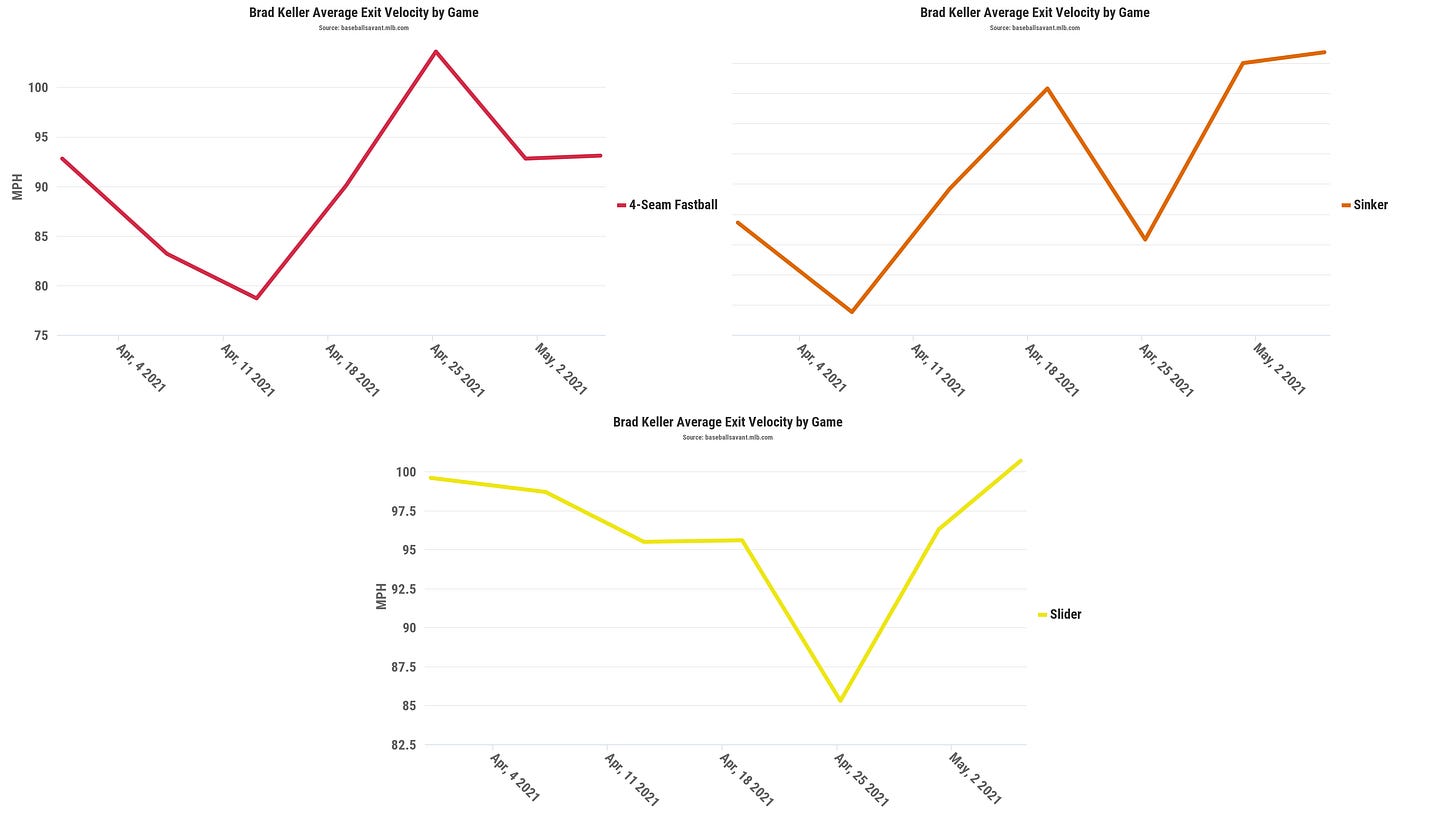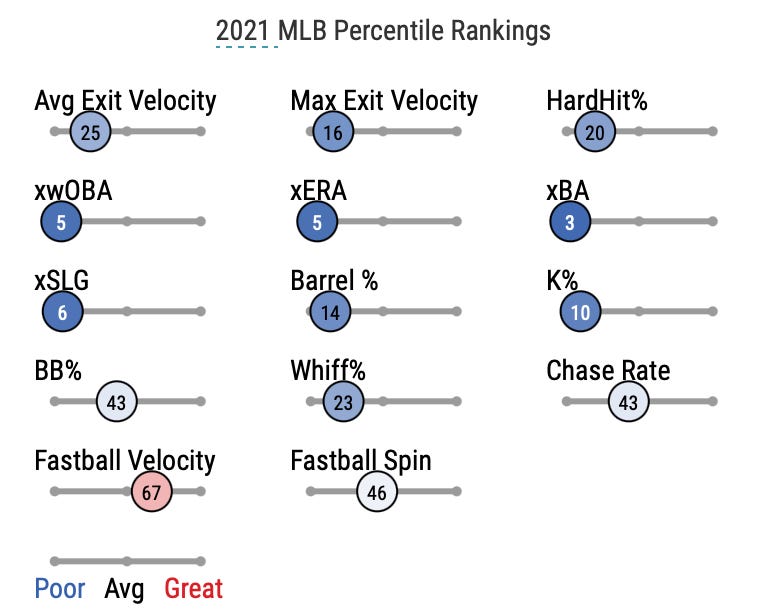Lost weekend
As the losses pile up I sort through the dreadful offense, try to determine if Daniel Lynch was tipping his pitches and take a closer look at Brad Keller trying to turn his season around.
Add all the sugar you want, there’s no way to make what we witnessed the last week any more palatable.
The Royals finished the homestand without a victory, losing seven consecutive at the hands of Cleveland and the White Sox. Add on the loss from a week ago Sunday and it’s eight in a row. Include the entire Twins series and the Royals have won one of their last 10.
Those good vibes of April have blown up in spectacular fashion in May.
It’s been a total team effort. The offense is sputtering. The starting pitching can’t go deep into games and often leaves a mess to a bullpen. And the bullpen is either blowing leads or putting more distance into a deficit that the offense just isn’t going to be able to make up.
Losing streak info you can suddenly use
This is the 35th time in franchise history the Royals have lost eight or more games in a row. It’s the 24th time they’ve plumbed to such depths in the 21st century. Another way to put it, in the first 36 years of the franchise, the Royals lost eight or more games 11 times. In the last 21 seasons, they’ve done that on 24 occasions.
Going back to 2016, the Royals’ longest losing streak is 10 games, a number we are now perilously close to reaching. Over those five-plus seasons, the franchise has seen one losing streak end at eight, three at nine games and two at 10. Where will this one end? The good news is (can you believe there is good news?) the Royals will head to Detroit, the scene of their four-game sweep against the Tigers just a little over two weeks ago for their next series. If they can’t snap the skid in Motown, feel free to start the countdown to the 2022 season.
The offense visits Siberia
The offense is going through a spell. That’s not exactly groundbreaking analysis given they scored 17 runs on the just-completed homestand which included back-to-back shutouts. That’s an average of 2.4 runs per game if you’re interested. It’s been quite a while since a Royals batter has brought home a run with a base hit. Since Jorge Soler doubled home two runs in the fifth inning on Wednesday, here’s how the Royals have scored.
Thursday - Shutout
Friday - Shutout
Saturday - Whit Merrifield ground out scores Jarrod Dyson
Sunday - Salvador Perez grounds into a double play, Merrifield scores.
- Michael A. Taylor ground out scores Carlos Santana.
- Merrifield sacrifice fly scores Lopez.
That’s a span of 156 plate appearances without a run-scoring base hit. Unreal! Even worse, it’s taken five outs to score those four runs. Amazing! They honestly have more productive outs than runs scored. You know how some of these old-school baseball announcers like to talk about home runs as rally killers. That’s ridiculous. Do you know what’s a true rally killer? Productive outs. It’s kind of difficult to spark a rally when those are the only way you can score a run.
Do you want to see something gross? From Fangraphs, here’s how the Royals hitters did in the just-completed homestand.
It’s good to see Merrifield and Perez at the top based on wRC+. They have been the most productive hitters. Too bad Matheny pushed Perez down to the fourth spot at the start of the homestand. A little too much distance between the two current offensive pacesetters. It’s also nice to see Dozier getting warm, but that performance is skewed by his first three games in the sample size. Since Thursday he’s 0-14 with six strikeouts.
From there it’s just kind of uninspiring. Benintendi and Santana are cooling down after a recent hot stretch. Michael A. Taylor is striking out at an alarming rate. Jorge Soler has yet to get going in any fashion. And Nicky Lopez hit the offensive skids with an absolute thud. Going back to the start of the series with the Pirates, he’s hitting .063/250/125 over his last 40 plate appearances.
Blech.
Tipping Lynch
So what exactly was going on with Daniel Lynch in his disastrous start on Saturday? We may be close to finding out.
Shot…

Chaser…

Was he tipping his pitches?
I overlaid video of a slider Lynch threw to Andrew Vaughn with a fastball delivered to Leury García in the same inning of Saturday’s game. There’s a little bit of bobble on the center field camera, which is annoying but something we’re used to watching Royals games broadcast from The K. That accounts for some of the blur on the signboards on the right of the frame. I used a stabilization method to try to align the shots as best as possible. Then, I back-timed the clip so his release point is frame accurate.
The leg kick looks misaligned because it is. When Lynch threw a fastball, the knee was closer to his glove earlier in the delivery. It’s a little bit higher. That’s the first clue something was amiss.
Lynch does that thing where he taps the ball into his glove as he’s at the apex of his kick. I imagine it’s a timing mechanism. When he throws the slider, it’s a fluid, continual motion. On the fastball, there’s a slight pause when his leg kick is at its highest. You can see the difference between the slider delivery and the fastball in the next gif. The slider is on the left. The fastball is on the right.
The second is a bigger tell, and would probably act as confirmation to a batter once the hunch that a fastball is coming. Look at his release points on the overlay. I’ve identified which pitch is coming out of which arm slot.
Again, this isn’t a perfect comparison because of the camera bobble between the two deliveries. But it sure looks like Lynch’s arm is higher on the release of his fastball. It’s lower on the slider. Release point data collected from Brooks Baseball confirms that Lynch was throwing his slider and fastball from two different release points.
It’s so small. So slight. It’s imperceptible while viewing from the dugout or probably even from the center field camera at home. But if a team did their homework and went looking for a difference that already existed…a major league hitter is trained to pick up those differences in delivery and exploit them. Perhaps they could take advantage as the White Sox did.
A lot of times when you look at release point from Brooks, the vertical location is consistent, with a slight spread on the horizontal plots. The Lynch chart above shows a drop in vertical location, which has him also moving his horizontal release point a little more than we normally see. Even if it’s not acting as a tip or a tell for opposing batters, I would think this is something the Royals would need to get cleaned up.
Finally, here’s a gif from @Royals_Jun that aligns the four different types of pitches Lynch threw in his major league debut. Again, the slider delivery just looks a little different.

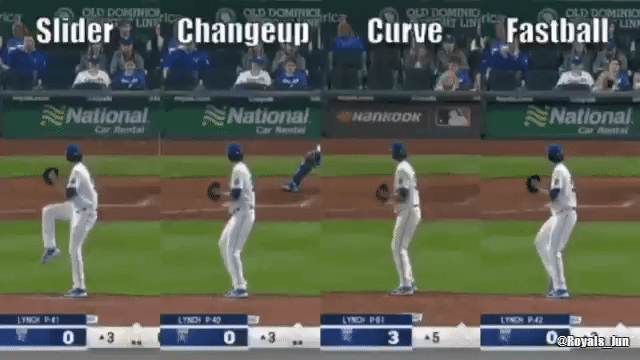
I think Mike Matheny’s comments confirm the Royals saw what the White Sox were looking for and that the tip is mechanical in nature.

If it was as simple as where Lynch was holding his glove before starting his delivery, or how he was blinking his eyes or whatever, the Royals would just work with him to eliminate it and move on. But if it’s mechanical, that’s going to take a little more work to get an adjustment to take. Hence, the “timely manner” that it will take for Lynch to fix the issue.
Welcome back Keller?
Brad Keller is the only Royals starting pitcher who completed six innings of work during this losing streak. He accomplished that on Friday against the opening game of the weekend series against the White Sox. The overall stat line from Keller was fairly encouraging, given where he’s been for most of 2021.
6 IP, 5 H, 3 R, 3 ER, 1 BB, 6 SO
He threw 101 pitches, 63 for strikes and finished with a Game Score of 55. It was his second-best start of the year, trailing his outing against the Angels back in mid-April.
While the start was a positive result, I’m not sure what we saw on Friday lends itself to those results being repeatable.
To begin, the White Sox were hitting the ball with extreme malice against Keller. It’s no secret batter’s are having a field day when it comes to exit velocity against Keller in 2021. Friday was no different.
Keller threw the fastball 46 percent of the time, with eight put in play. His average exit velocity was down a bit from his start against Detroit from the end of April, but at 93.1 mph, still well ahead of where he has been in the past. The sinker and slider were thrown 27 percent and 23 percent of the time, respectively. As you can see from the charts above, both pitches were hit harder on Friday than at any other time of the season.
What also raises the alarm in this Friday start was the fact that there were a lot of balls hit in the air against Keller. According to the box score at Baseball Reference, there were 10 fly balls, four line drives and only six ground balls for Keller. That continues a current trend and one that runs completely counter to the Keller we’ve known.
His ground ball rate is way down, almost nine percentage points off his career average, while his fly ball rate is up by almost 10 percentage points. It’s hardly surprising given the average exit velocity and the increase in launch angle against him that he’s given up 17 extra-base hits in 2021, including five home runs.
This is where he currently stands on the Statcast 2021 MLB percentile rankings.
Now for some optimism…What I liked about Keller’s start is he had some sustained success early and he was able to dance around trouble late. If you’ve been reading this newsletter at all over the last month, you know I’ve been saying some of these struggles are mental. Keller puts a runner or two on, they score and the bad times just kind of start to snowball. I’ve felt he needed not only some clean innings with no baserunners, but he’s needed innings where he puts a runner or two on and gets out of a jam with minimal damage. We saw that on Friday.
He walked the second batter of the game but retired Yoan Moncada and José Abreu on strikes. He retired 12 in a row (although with the aforementioned hard contact), gave up a home run and single with one out in the fifth, but got a double play off the bat of Leury Garcia—hit at 98.7 mph—to escape.
Trouble came in the sixth, but by that time he was at around 80-plus pitches, so he was probably battling fatigue along with the White Sox bats.
After almost every start since his first two, Keller has talked about making mechanical adjustments. He’s trying to root out the cause, and despite what looks like positive results on the surface, there’s still a long way to go. But the good news is, he has a positive result which should give him some renewed confidence the next time he makes a start.
Central issues
Minnesota at Detroit — Postponed
Cincinnati at Cleveland — Postponed
How do you like that?
The teams at least got two games in before their Sunday washout. Cleveland left Kansas City with a four-game sweep of the Royals and was immediately no-hit on Friday by Wade Miley. Their bats came alive the next night in a 9-2 victory.
The Twins did what good teams are supposed to do to the Tigers, leading all the way in Friday night’s 7-3 victory. But because the Twins can’t have nice things in 2021, they stumbled to a late defeat on Saturday as the Tigers rallied for five in the seventh.
Up next
Monday is an off day. Thank the baseball gods.







